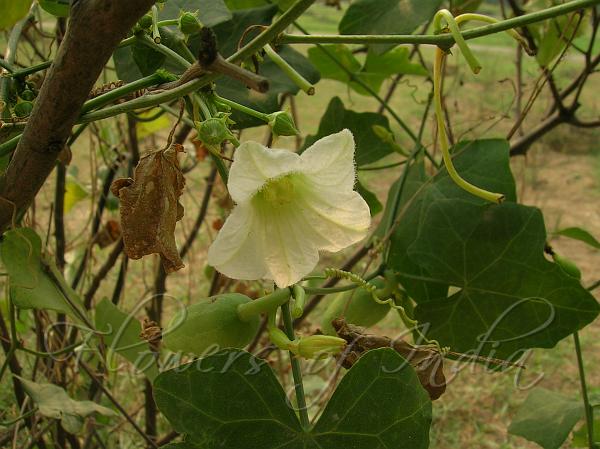|
| Ivy Gourd |
|

|

| File size | 977959 |
| Original date | 10/28/06 2:41 PM |
| Resolution | 2048 x 1536 |
| Flash | Flash did not fire, auto |
| Focal length | 5.4mm |
| Exposure time | 1/208s |
| Aperture | 4.8 |
| Focus Distance | |
| Metering Mode | Partial |
| Camera make | NIKON |
| Camera model | E3700 |
| Sensor type |
|
|
|
|
Photo: |
Botanical name: Coccinia grandis Family: Cucurbitaceae (Pumpkin family)
Synonyms: Coccinia indica, Bryonia grandis, Cucurbita dioica
Synonyms: Coccinia indica, Bryonia grandis, Cucurbita dioica
Ivy gourd is a tropical plant in the pumpkin family. Ivy gourd is
an aggressive climbing vine that can spread quickly over trees, shrubs,
fences and other supports. It is an outdoor plant but prefers a sunny
sheltered position and a sandy soil. Being a perennial plant, it can spread
vegetatively or by seed. The stem is a herbaceous climber or perennial
slender climber with occasional adventitious roots forming where the stem
runs along the ground. The tendrils are long, elastic with coil-like
springy character that can wrap around the host to the entire length. The
leaves are classified as palmately simple with five lobes while the shape
varies from the heart to pentagon form. The size of the leaves is
approximately 5 10 cm in width and length. The flower is large and white
about 4 cm in diameter and contains five long tubular petals. The ivy
gourd fruit belongs to the berry type: oval and hairless with thick and
sticky skin. The raw fruit is green in color and turns bright red when it
is ripe. The mature fruit is usually from 25 to 60 mm long by 15-35 mm in
diameter and contains several pale, flattened seeds.
| Identification credit: Tabish | Photographed in Sundar Nursery, Delhi & Surat, Gujarat. |
• Is this flower misidentified? If yes,